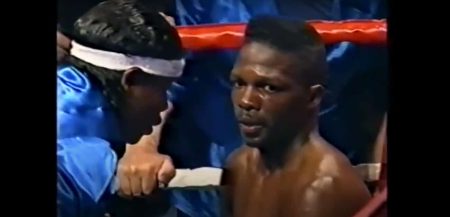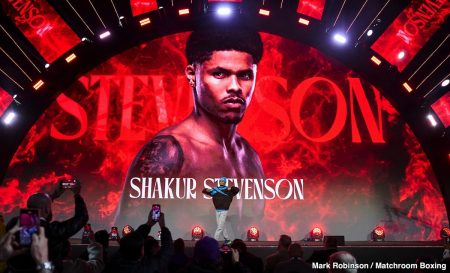Career Freeze: The Unforeseen Consequences
Promoter Eddie Hearn has voiced his concerns about the ambitious plan put forth by Turki Alalshikh and Dana White to streamline the sport of boxing by having just one champion per weight division. While the idea might seem innovative on the surface, Hearn argues that it could have severe repercussions for the fighters. The primary issue is the monumental backlog of contenders waiting for their shot at a title. As it stands, fighters often face long waits due to repeated rematches and other logistical challenges. If the sport were to adopt a one-belt system, these delays could become even more pronounced, effectively freezing the careers of many aspiring champions. Fighters like Artur Beterbiev and Dmitry Bivol, who are known for their grueling rematches, could see their divisional progress stagnate, causing younger, talented contenders to age out of their prime without ever getting the opportunity to compete for a world title. This scenario not only stifles the growth of individual fighters but also diminishes the sport’s vibrancy and competitiveness.
Line Jump: Unfair Advantages and Promotional Tactics
The one-belt system proposed by Alalshikh and White is not only impractical but also potentially公平 (fairly) harmful to the integrity of the sport. One of the most concerning aspects of this plan is the potential for line jumping, where established fighters are allowed to move up multiple weight divisions to challenge for titles without properly competing in those divisions. For instance, Terence Crawford, a dominant force at 154 pounds, is being eyed to move up to 168 pounds to challenge Canelo Alvarez for his WBA, WBC, and WBO super middleweight titles. This move would be glaringly unfair to the fighters who have dedicated years to honing their skills at 168 pounds. Hearn’s critique highlights the inherent injustice in such practices, suggesting that if they become the norm, it could have a cancerous effect on the fighters within Turki’s new league. The principle of equality among fighters, so crucial to the sport, would be severely compromised, leading to widespread frustration and a decline in the overall quality of competition.
One Belt, One Vision: The Unrealistic Ideal
Hearn’s skepticism about the feasibility of a one-belt system is grounded in the existing landscape of boxing. The idea of having a single champion per division has been a recurring topic of discussion, but it has never been fully realized due to the entrenched presence of multiple sanctioning bodies. The IBF, WBA, WBC, and WBO each have their own titles and histories, and their financial and organizational structures are deeply rooted in the sport. For Turki Alalshikh and Dana White to implement a one-belt system, they would need to either dismantle these bodies or gain their unequivocal support, both of which are highly unlikely. Hearn points out that the financial firepower of these new players could potentially fragment the sport further, rather than unify it. Their league could become a parallel universe, where the most talented fighters are poached from other promoters, exacerbating the divide in the boxing community.
Wolves in the Ring: The Predatory Nature of the New League
Hearn’s analogy of Turki and Dana White as wolves watching for talented fighters to poach is particularly apt. The new league’s approach would likely involve waiting for other promoters to develop and nurture fighters, and then offering them lucrative contracts to switch allegiances. This strategy might seem logical from a business perspective, but it could lead to a significant imbalance in the sport. Established promoters who invest time and resources into developing fighters would be left with diminished rosters, while the new league would benefit from a ready pool of top talent. This predatory behavior could undermine the long-term health of boxing, as smaller promoters are pushed out of the market, and the sport becomes dominated by a few large entities. The result could be a homogenized and less dynamic boxing scene, which is detrimental to both the fighters and the fans.
The Legacy of World Championship Belts
For many fighters, the world championship belts from the IBF, WBA, WBC, and WBO are more than just decorative accessories; they represent a rich legacy and a tangible symbol of achievement. Hearn emphasizes the emotional and historical value of these belts, noting that they are a direct link to the heroes and legends of the past. The idea of consolidating these titles into a single belt, even one with substantial financial backing, overlooks the deep-rooted significance of the existing belts. Fighters are motivated by the prospect of following in the footsteps of their idols and adding their names to the annals of boxing history. Removing this element could demotivate up-and-coming fighters, who are inspired by the legacy and the possibility of earning multiple belts. The sport’s traditions and the personal aspirations of fighters are vital components that should not be overlooked in any reform efforts.
A Fragile Solution to a Complex Problem
Hearn acknowledges that while boxing is not broken, it does face significant challenges that require thoughtful and comprehensive solutions. The idea of a one-belt system, while intriguing, is not a quick fix. It could lead to more problems than it solves, further fragmenting the sport and creating new disparities. Hearn’s belief in finding out who the best is through fair competition is a cornerstone of his criticism. He advocates for a system that allows multiple champions and frequent title challenges, as this fosters a more dynamic and engaging sport. The complexity of boxing’s current structure, including the role of various sanctioning bodies and the diverse interests of promoters and fighters, means that any proposed change must be carefully considered to avoid unintended consequences. Hearn’s cautious approach underscores the need for a collaborative and gradual process to address the sport’s issues, rather than a sweeping and potentially harmful overhaul.
In conclusion, while the vision of a unified championship in each division may seem appealing, the practical and ethical challenges it presents are significant. Hearn’s insights highlight the need for a balanced and inclusive approach to boxing reform, one that respects the sport’s history and the aspirations of its participants.











